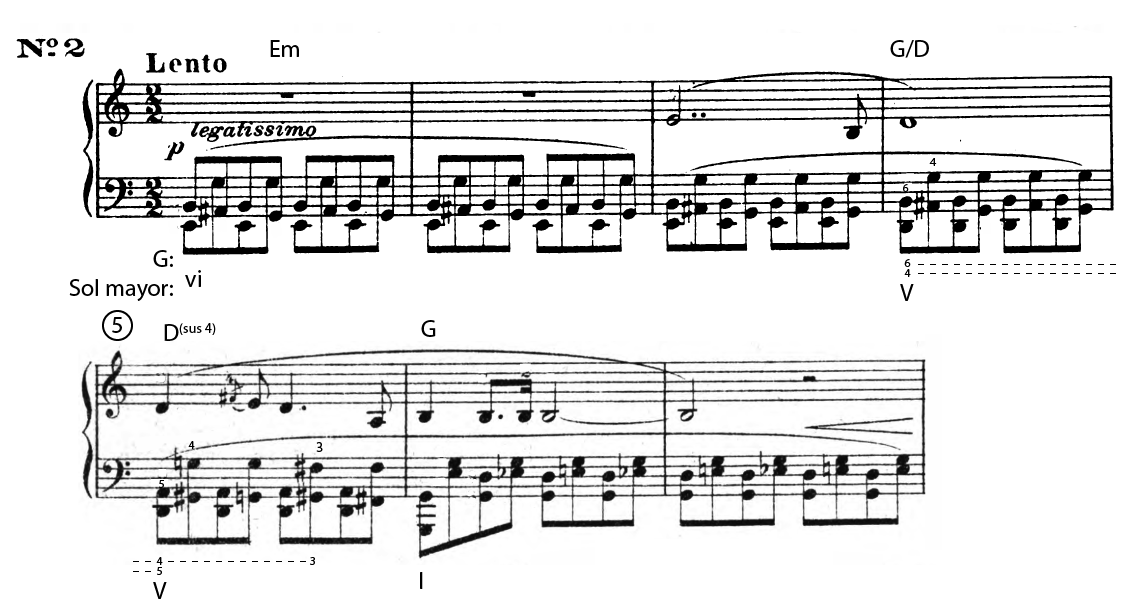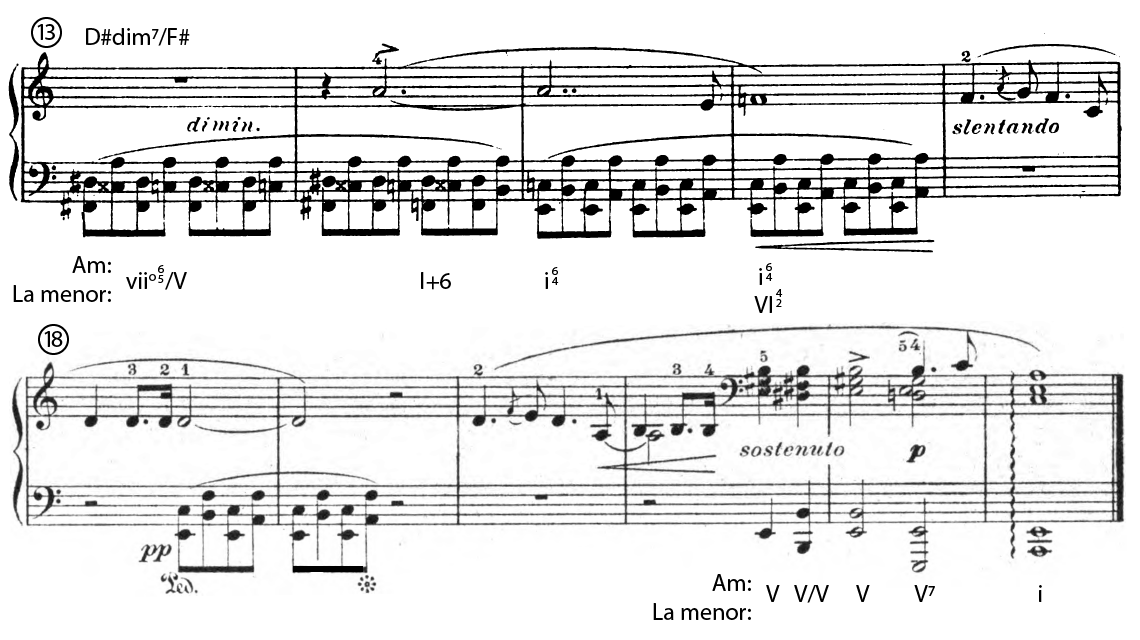Prelude No. 2 in A Minor by Frédéric Chopin
José Rodríguez Alvira
Prelude No. 2 in A minor starts with a G major progression. The A minor key does not appear until the very last measures. Here are the first measures:

Robert Ståhlbrand, piano. Courtesy of Piano Society
Chromatic neighbor notes (A# in measures 1 to 4 and G# in measure 5) hide the simple harmonic plan of these measures. Chopin adds the major (E) and minor thirteen (Eb) to the tonic chord in measures 5 and 6.
Follows the basic harmonic plan of this section:

Measures 8 to 12 are very similar to the previous version but transported to the D major key. Chopin avoids the expected resolution to the tonic chord in measure 11. Chopin uses a half diminished seventh chord that changes into a diminished seventh chord in measure 12. This chord is a VII/V of A minor:

Robert Ståhlbrand, piano. Courtesy of Piano Society
The VII/V changes into an Italian augmented sixth chord in measure 14 and then an A minor tonic chord in second inversion (or a V 6/4 if you prefer). The expected dominant chord is never heard. A somewhat ambiguous chord appears in measure 16: A minor with an F as appoggiatura or an F major seventh chord in third inversion?
The absence of chords in some of the measures that follow makes the harmonic analysis somewhat uncertain. Finally, we arrive at the A minor key in the last three measures:

Robert Ståhlbrand, piano. Courtesy of Piano Society
Complete Prelude:
Robert Ståhlbrand, piano. Courtesy of Piano Society
© 2019 José Rodríguez Alvira. Published by teoria.com